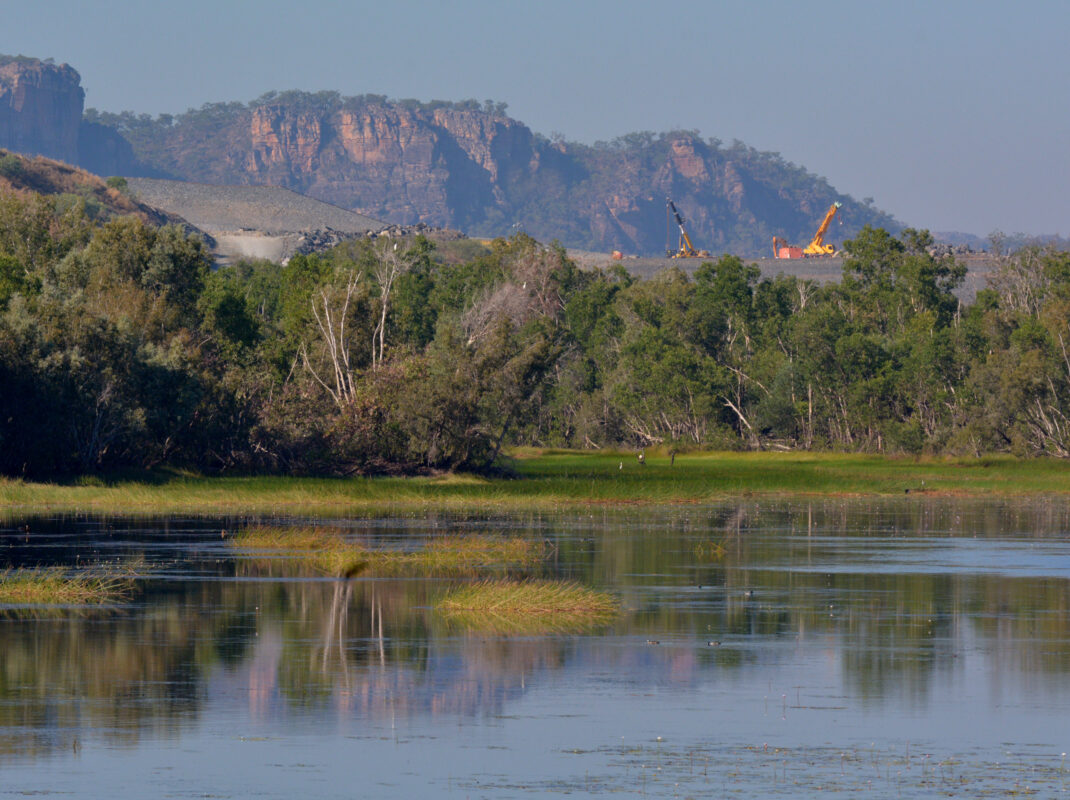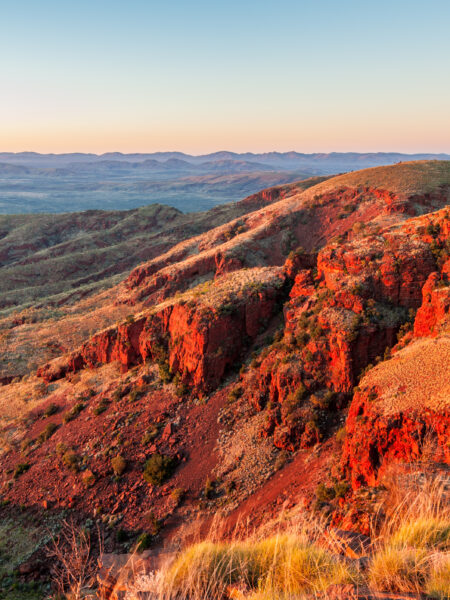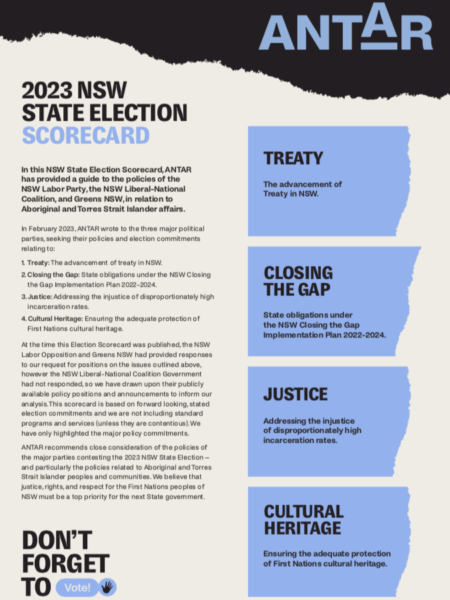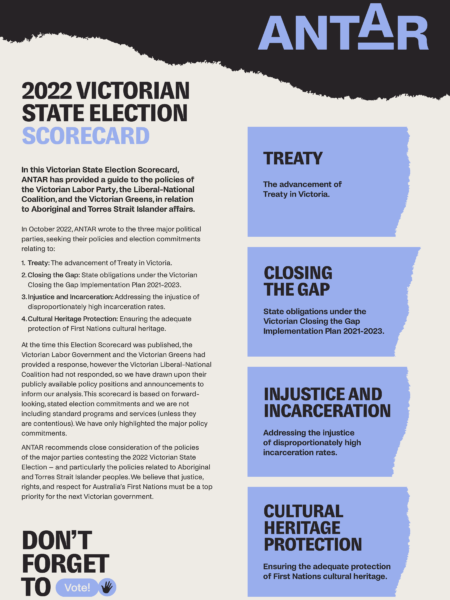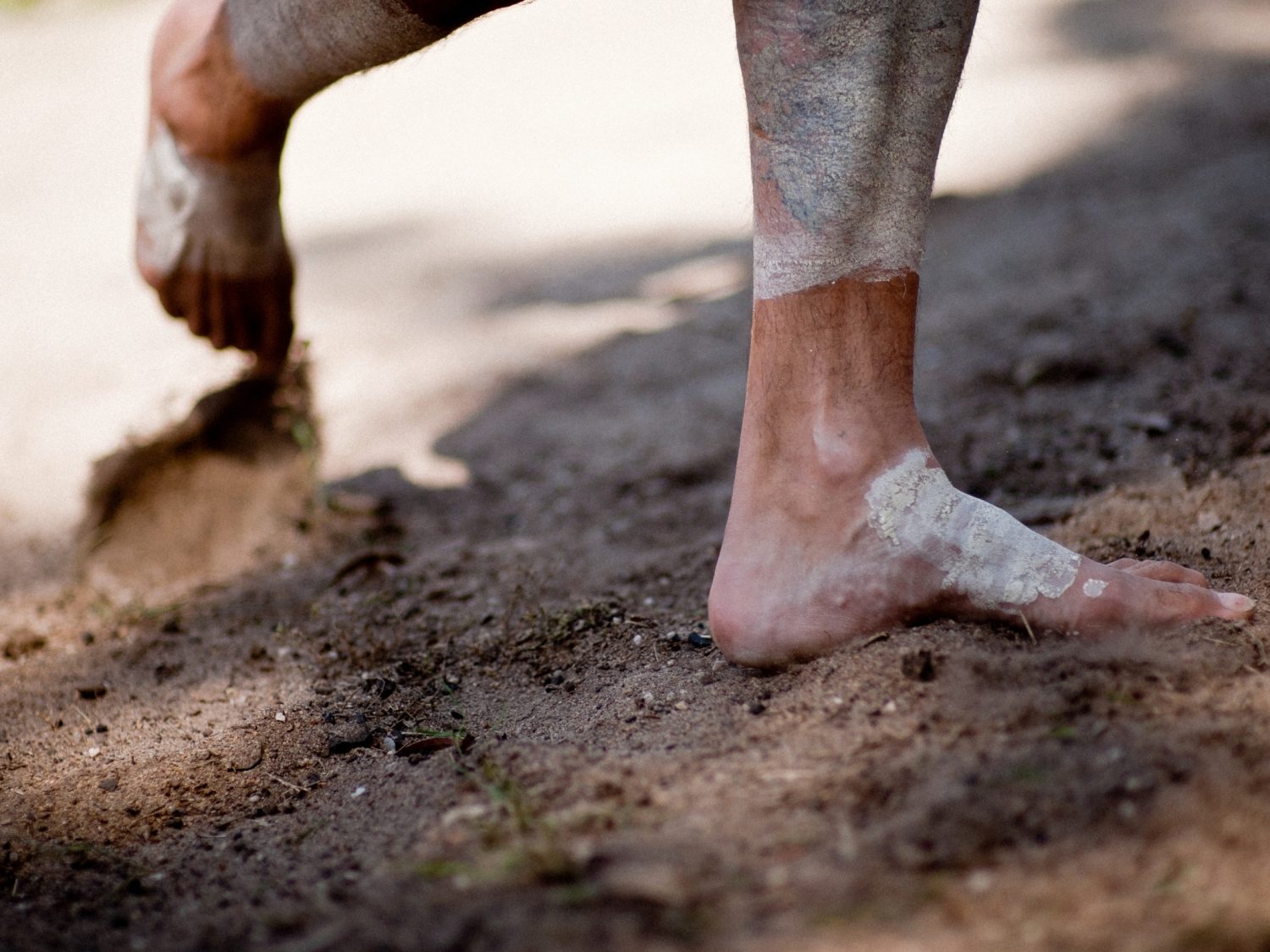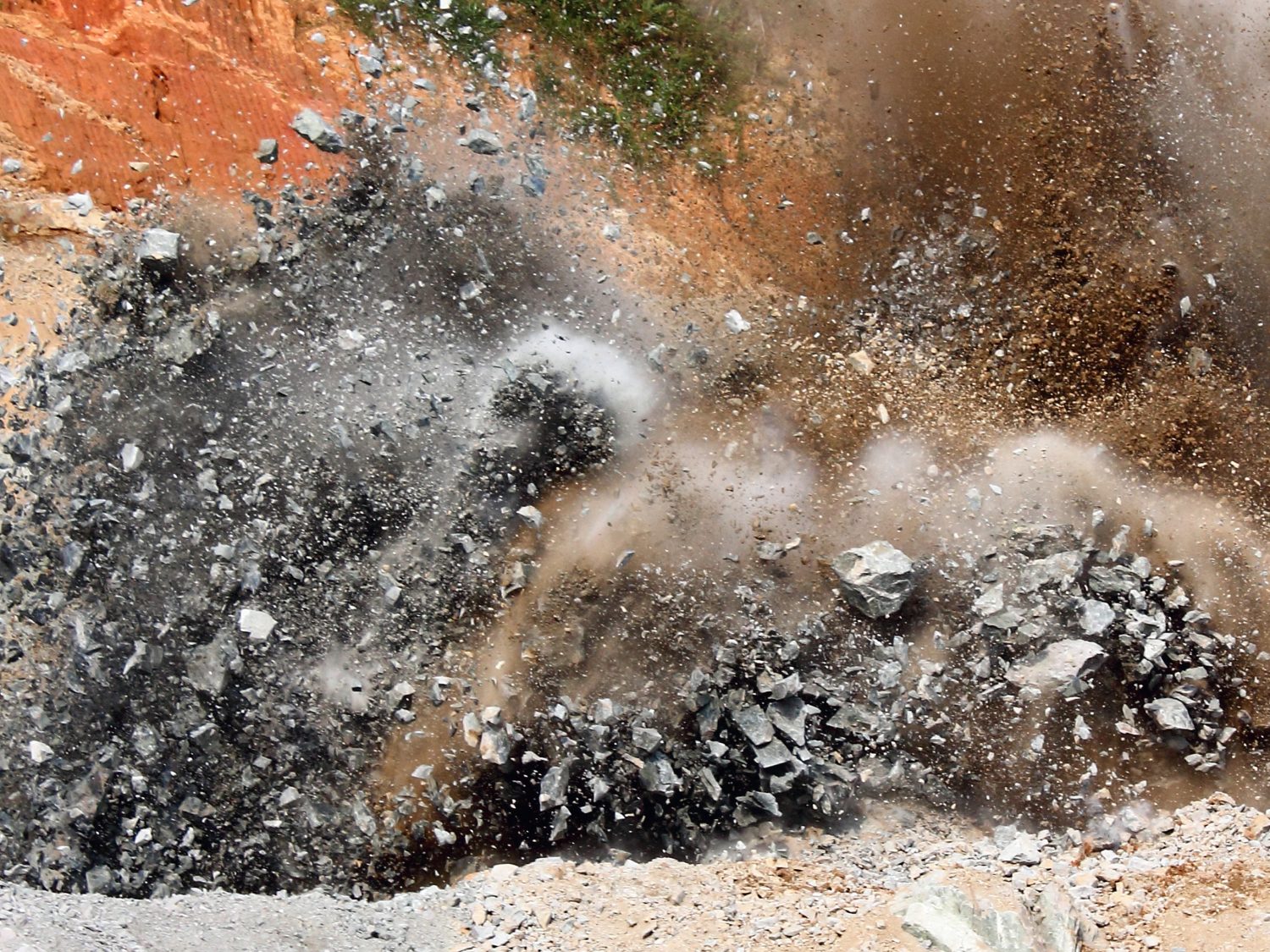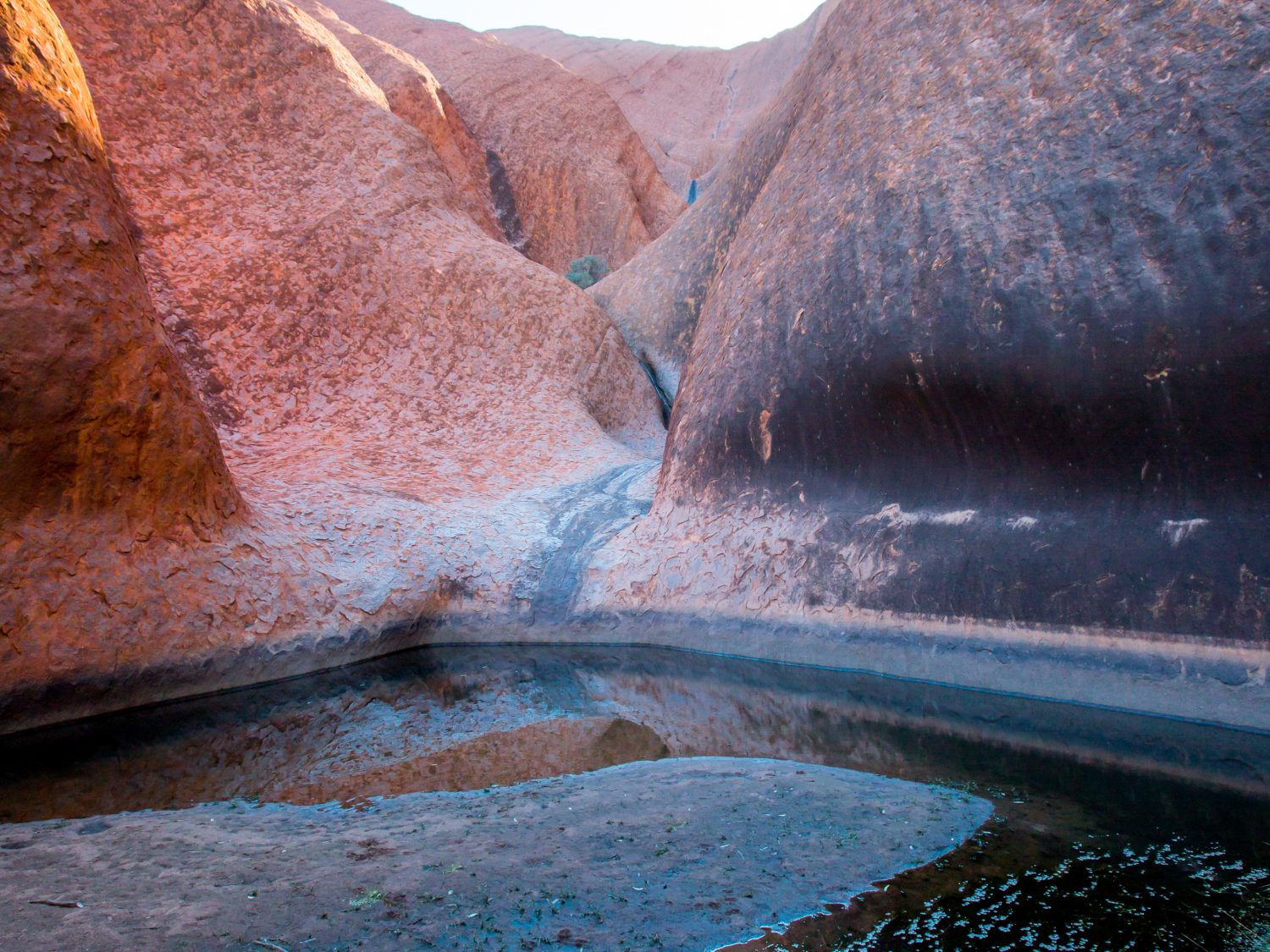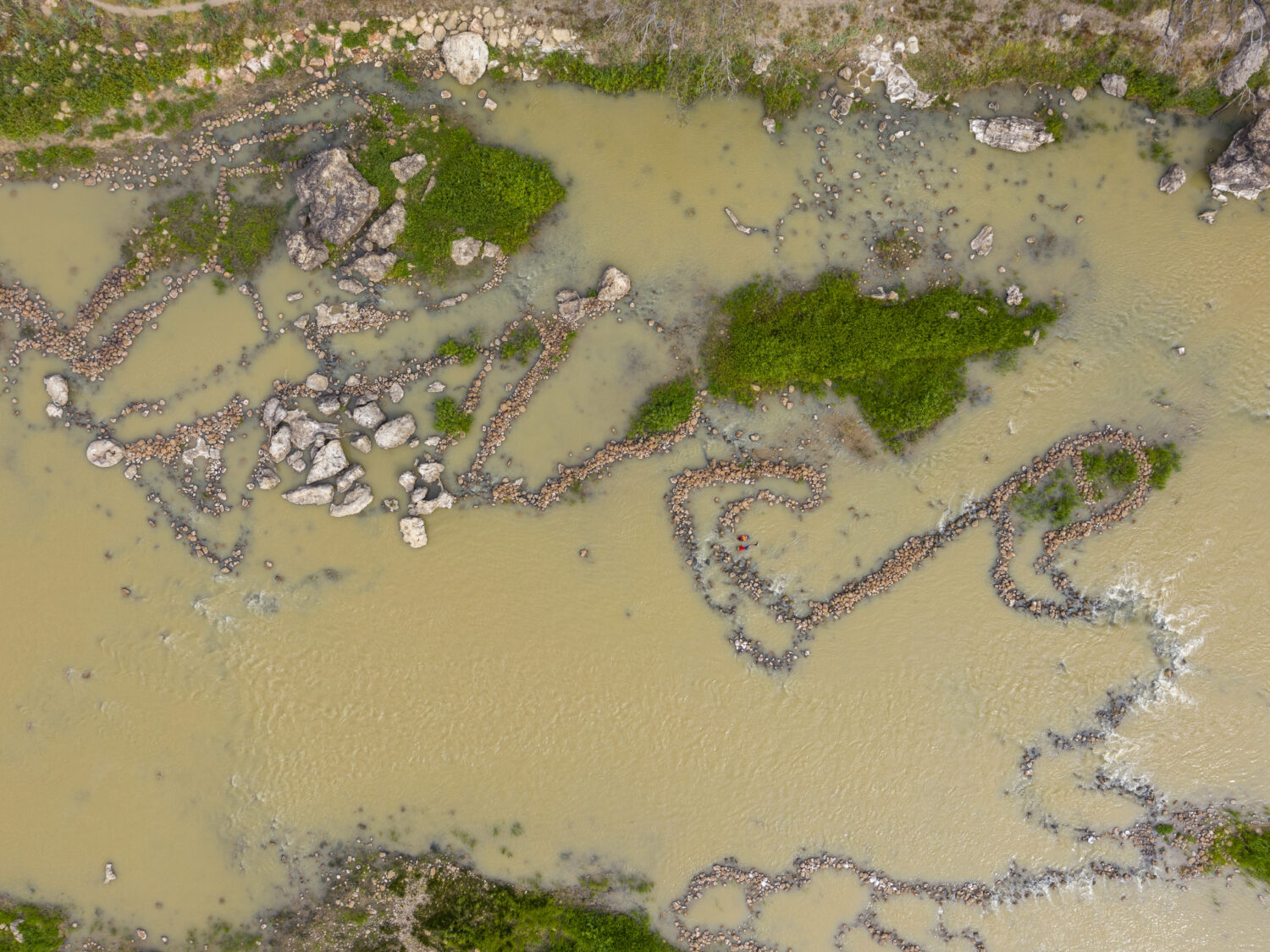The Territory has a population of approximately 250,000 people, of whom 80,000 or about 30% are First Nations Peoples. The highly controversial 2007 Northern Territory Intervention legislated until 2022, eroded the already difficult efforts for First Nations self-determination. Most non-Indigenous Territorians live in the major towns while a significant number of Aboriginal and Torres Strait Islander people live remotely.
Land management is a unique feature of the political economy of the NT with currently 70 percent of the NT land mass under some form of First Nations ownership with inalienable freehold title either whole or partial. There are four Aboriginal Land Councils that have statutory (Government authorised) functions to assist Traditional Owners (TOs) including to protect sacred sites both on and off First Nations land. Understanding the context of the NT geography and demographics helps to make sense of the cultural heritage protection issues that dominate the NT today.
BACKGROUND
The 1960s was a time of significant social economic changes in Australia – from Union demands for better working conditions, the beginning of mining explorations across northern Australia to the emergence of widespread resurgence of First Nations demands for civil rights.
Two events in separate regions of the NT came to epitomise the emerging and competing interests of rights to traditional cultural living, the ambitions of the extractive industries and demands from Aboriginal and Torres Strait Islander peoples for civil rights. One was the 1963-71 Yolngu peoples’ unsuccessful battle to prevent the excising of some of their land for development of a bauxite mine in East Arnhem Land. It was the first time Aboriginal people had taken Court action for land rights and it became known as the Gove land rights case.
The second momentous event (1965-1972), saw the Gurindji peoples’ strike to protest poor working conditions finally result in the first successful claim for Aboriginal land in Australia. With strong support from influential union groups, the Gurindji people’s struggle for justice became known Australia wide. It paved the way for the Woodward Royal Commission (1973-74) to find appropriate ways to recognise Aboriginal land rights in the NT, which in turn led to the passing of the 1976 historic NT Land Rights Act. The iconic picture of Prime Minister Gough Whitlam pouring red dirt into the hands of Gurindji leader marks this historic event.
TIMELINE
- 1976: The Aboriginal Land Rights Act (ALRA) (a Federal Act) provided for Aboriginal and Torres Strait Islander peoples to claim land title on Crown lands if traditional association could be proved. It has resulted in nearly half of the terrestrial estate and 85 per cent of the coastline being transferred as inalienable freehold title to Aboriginal land trusts. It was legislated nearly two decades before the Mabo decision and is still considered ‘one of the best forms of heritage protection in Australia’. It pertains only to the NT and has arguably contributed to the peaceful and responsible development of the NT and helped avoid the kind of violent confrontations between First Nations landowners and developers seen in other parts of Australia and overseas.
- 1977-1978: There were two iterations of an Aboriginal Sacred Sites (NT) Act building on the ALRA Act. Legislators around the country increasingly became aware of the importance of sacred sites and the need to preserve historical evidence of Aboriginal peoples’ long occupation of Australia. The 1978 Act led to the establishment of what is now the Aboriginal Areas Protection Authority (AAPA) – a First Nations independent statutory authority that oversees protection of sacred sites up to the present.
- 1978: The Northern Territory achieved limited self government (Self-Government Act)
- 1980s: Various amendments to the Aboriginal Sacred Sites (NT) Act were attempted as stakeholders tried to balance protection of sacred sites and the development of the Territory, its people and resources.
- 1989: The formation of the Northern Territory Aboriginal Sacred Sites Act (NTASSA), established a procedure for protection and registration of sacred sites, conditions for entry to these sites and procedures to avoid sacred sites in development. This Act confirmed the establishment of the Aboriginal Areas Protection Authority (AAPA) and a procedure for review of decisions by the AAPA. The AAPA is a small but effective agency that manages to bring approximately two prosecutions per year for breaches of the NTASSA.
- 2011: The NT Heritage Act has a broad remit (beyond Aboriginal sacred sites) to conserve the NT’s cultural and natural heritage. It offers automatic protection to all Aboriginal or Macassan archaeological places and objects across the NT.
- 2021: Aboriginal Land Rights (Northern Territory) Amendment (Economic Empowerment) Bill. It is a long and complex legislative document embarking on the most significant amendment to the ALR Act since 1976. It is comprised of four schedules:
- Establishing a new statutory body, the Northern Territory Aboriginal Investment Corporation (NTAIC);
- Streamlining the exploration and mining provisions of the Land Rights Act;
- Improving and clarifying the land administration provisions of the Land Rights Act; and
- Technical amendments relating to the Aboriginal Benefits Account (ABA).
What’s happening now?
An interactive map meticulously documents the twenty-one Sacred Site regions across the Northern Territory that the AAPA has identified since 1989. This remarkable website shows the vast scope of sacred sites that the Northern Territory’s Aboriginal Sacred Sites Act (NTASSA) is responsible for protecting. And yet, despite model legislation, compliance remains an intransigent problem in the NT as it does in most Australian jurisdictions when First Nations heritage protection is pitted against the dependency of government revenues drawn from the extractive industries.
Sites of Concern
McArthur River Mine
The McArthur River rises in the Barkly Tablelands, flows in a northeasterly direction for 521 km and enters the sea in the Gulf of Carpentaria. For at least three decades the Gurdanji, Garrwa, Yantuwa and Marra people have fought to preserve these timeless sacred landscapes “that sing the songs, right where the Snake Dreamings are, where the Jabiru, the Barramundi, Dingo and Turtle Dreamings are. Submission 154 to the Parliamentary Enquiry into the Juukan Gorge destruction contains a number of stunning paintings depicting the precious heritage of the McArthur River Mine region
The area is also home to one of the world’s largest deposits of zinc and lead that has seen an operational underground mine since 1995. Twice there have been extensions to the mine. The first between 2003-08 when the river was diverted to accommodate the move from underground to open cut, and currently as the mining company negotiates again for a further extension to keep the mine viable until 2048. While the current extension decision is pending the government has given permission for the company to continue mining with potential damage to specific sacred sites. Currently, the mining company has committed to pursuing an Indigenous Land Use Agreement (ILUA) but a withering assessment states that traditional owners:‘are in need of legal assistance to properly come to any agreement.’
After more than three years of deliberation, in February 2022 the NT Government rejected the mining company’s appeal against the previous Aboriginal Areas Protection Authority judgement. The long-awaited decision throws doubt over the company’s plans to continue expanding the mine.
Aboriginal Land Rights Amendment Bill 2021
According to Jon Altman, there are major concerns about the Aboriginal Land Rights (NT) Amendment (Economic Empowerment) Bill 2021. As noted in the Timeline this Bill passed into law in December 2021 just six months after it was introduced into Federal Parliament. The headline announcement of the reforms stated that the Bill represented:
…a package of generational reforms to the Aboriginal Land Rights (Northern Territory) Act 1976 (ALRA) to activate the potential of Indigenous land in the NT.
It was co-designed with the four NT Aboriginal Land Councils. Some of the key reforms have long been sought by Land Councils and Traditional Owners, others pose potential conflicts of interest between parties. Implementation will be lengthy and entail far reaching consequences for relationships between NT Land Councils, other Traditional Owners and the Federal government.
Issues of concern include:
- Reforms negotiated in secret and have excluded local communities and the NT government;
- The reforms passed into law with only a belated brief period of time for a Senate Enquiry with no substantive amendments despite nearly 60 of the 67 Submissions recommending changes to the Bill.
- Land Councils represent traditional owners in certain matters (but not all). This means the exclusive nature of the co-design process and the rushed timetable, has resulted in significant cohorts of other Aboriginal Territorians being deprived of their fundamental right to offer free prior and informed consent to such sweeping changes.
A brief critical assessment of this Bill, written before the Government acquiesced to a brief enquiry recommends that:
The sheer scale of the Economic Empowerment Bill makes it unlikely that it has been widely assessed: this strengthens the case for greater scrutiny of the Bill and for early independent review of its new provisions being guaranteed if it is passed.
The bill was passed in December 2021. Jon Altman warns of potential conflicts of interests between the co-designers of the new Bill and other Aboriginal Territorians and urges early review of its implementation.
Beetaloo Basin
For over a decade opposition to the NT government’s intention to support hydraulic fracturing of onshore unconventional reservoirs (commonly referred to as ‘Fracking’) has been growing. In 2016, the NT government imposed a two-year moratorium on further exploration while it undertook a Scientific Inquiry into Hydraulic Fracturing. After publication of the Inquiry Report and government commitments to abide by all the safeguarding recommendations contained in it, the moratorium was lifted. In 2021, the NT government laid out its plan to pursue advanced exploration of hydraulic fracturing in The Industry Research and Development (Beetaloo Co-operative Drilling Program) Instrument 2021.
The Beetaloo Basin fracking has been strongly opposed by a number of First Nations groups across the Basin – including the Gudanji, Yanyuwa, Garrwa, Jingili, Mudburra and Alawa peoples. In June 2021, this opposition, with increasing support from other environmental groups across the country, were successful in securing a full Senate Inquiry into the fracking of the Beetaloo Basin.
The key environmental, financial social and cultural objections presented to the Inquiry include:
- The threat to security and quality of water with the impacts of fracking and concerns regarding wastewater management [which had been] one of the biggest issues raised during the Government’s Independent Scientific Inquiry;
- Threats to sacred sites and waterways;
- Absence of consent from Traditional Owners;
- Expert doubts as to the economic viability without big government subsidies as the world moves to decarbonise;
- That public funding should be spent on people not profits; and
- Fracking of the Beetaloo and McArthur basins is a climate disaster for the NT and beyond.
At a March 2022 hearing in Darwin, all these concerns and more were reiterated, in particular concerns about contamination of ground water and its depletion from the Great Artesian Basin and the increased emissions burden on Australia’s ability to meet its 2050 zero emissions target. First Nations Senator Dorinda Cox says:
Traditional Owners have been very clear – they don’t want this fracking to go ahead. They don’t want their lands and waters to be poisoned. They don’t want this climate bomb. There is no free, prior and informed consent – and this should be a necessity given the enormous scale of this potential climate disaster.
Currently the Senate Inquiry is in abeyance due to delays in transition time to the present new Federal government.
Take Action
Initiatives for cultural heritage protection in the NT – join up, sign petitions, donate, volunteer, write letters to/ visit local MPs as directed.
Further Reading
Resources for a deeper understanding of the complex political, demographic and sustainability issues that will shape the NT’s future.
